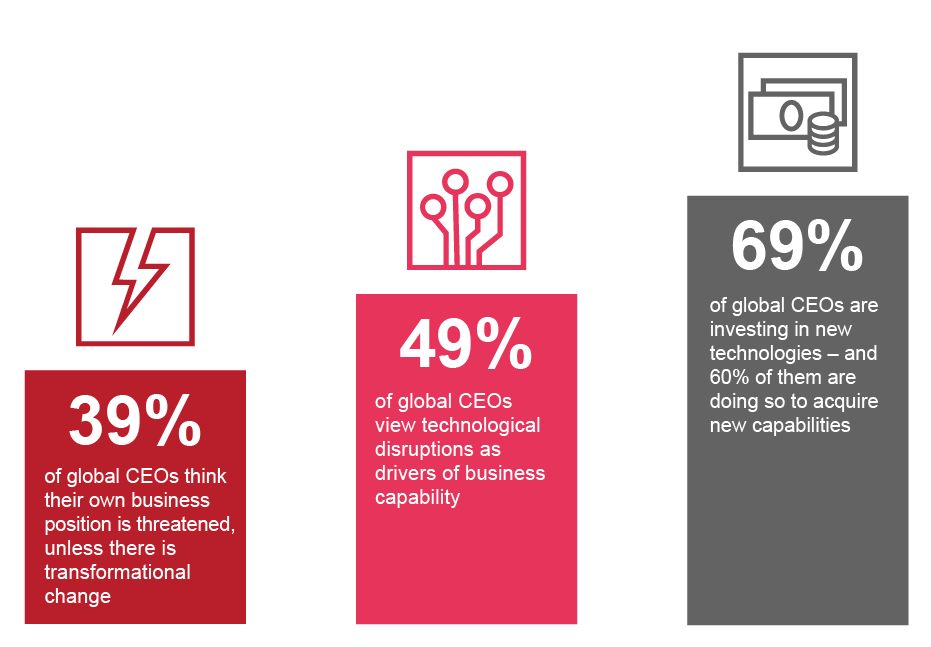{{item.title}}
{{item.text}}

{{item.title}}
{{item.text}}
Digitalization is here - in full force, at all levels. For years, companies have been investing massive sums to update old back-end systems, to introduce modern e-commerce solutions and to implement new technologies such as Artificial Intelligence. For this, companies must not only renew their IT system landscape, but also ensure the effectiveness and efficiency of their IT organizations, so that they can face up to the challenges of digitalization.
The past few years have radically accelerated this trend. Recently, the Covid pandemic has shown clearly how important digitalization is. Digital change went into overdrive, and investments in IT systems increased with this trend. As the global CEO survey by PwC recently showed, just under 69% are looking to invest in new technologies, and in 60% of cases this is to acquire new capabilities.
Although the global economy is currently foundering, studies show that companies will invest significantly more in their IT landscape moving forward.
According to Gartner, the expenditure of an average IT department is increasing by 4.3% this year. By 2030, up to over 40% growth is expected. But despite this high expenditure, the rumblings at all levels are about tensions between CEOs and CTOs – in some cases, the frustration is high. According to surveys, there are three main reasons:
1 Gartner, 2021
2 IDC, 2022
3 Gartner, 2022
The causes of these symptoms often lie deep. For instance, many companies start their transformations in silos – what’s missing is a business IT strategy involving all areas. The hoped-for benefits are not realized. The result is frustration. Poor collaboration between IT and the rest of the company intensifies this effect.
The technology is often complex and out-of-date, or the processes and services are not particularly harmonized. On top of this, there is a phenomenon that we like to refer to in our discussions with clients as the “everything at once” syndrome. The transformation should take place as quickly as possible at all levels, but without any prioritization. That can’t work.
As a solution, we recommend four simple guidelines to our clients.
What does that mean for businesses? The guidelines we have outlined offer orientation. Strategic guardrails help in prioritizing business values. Closer integration of business and IT, but also better parameterization of IT projects, should be operationalized step by step, for instance when implementing initial strategic projects. Simplifying the system landscape and building up the global talent ecosystem are mid- to long-term projects, but they require immediate initialization by elaborating an individual target vision.



